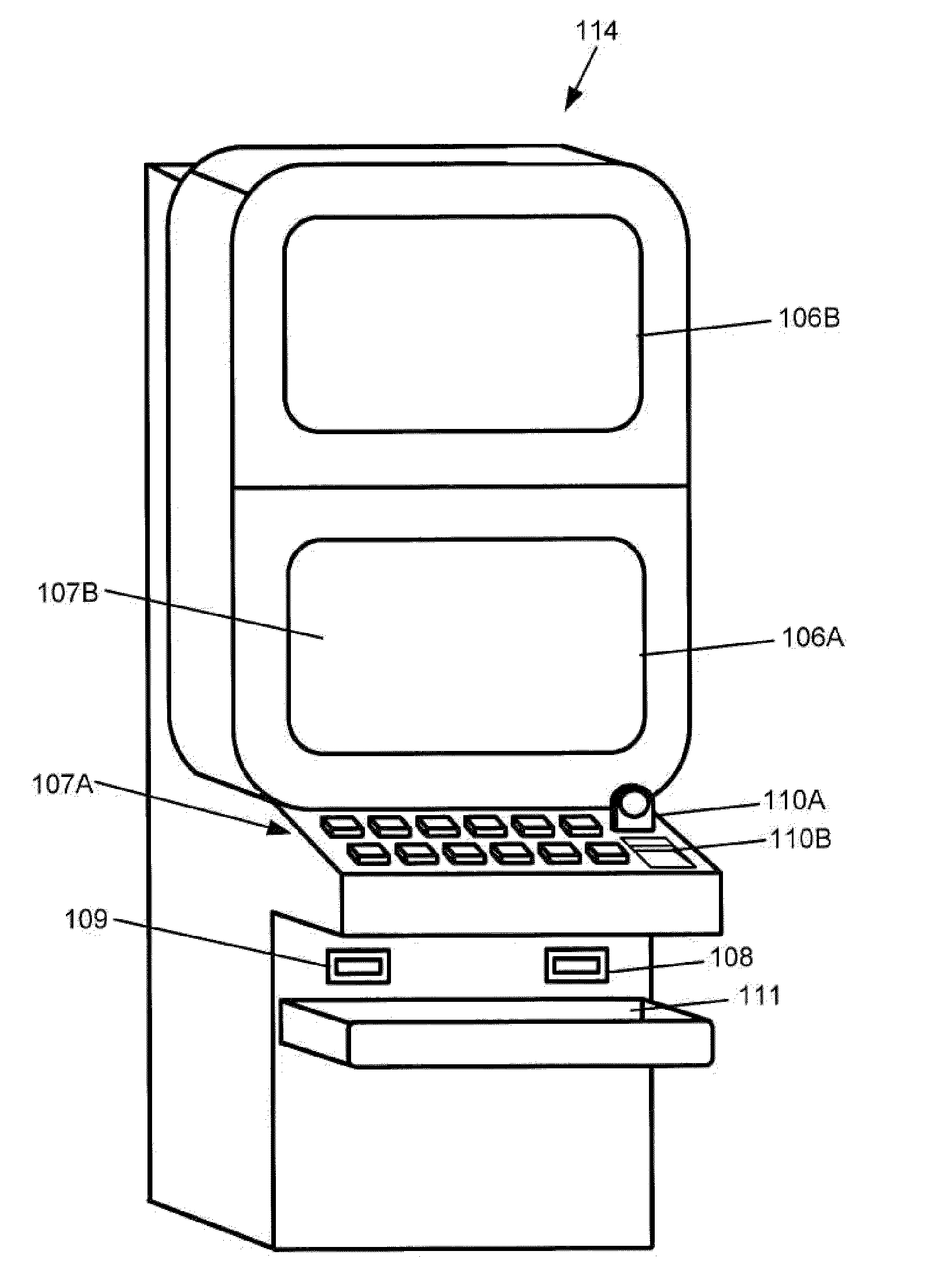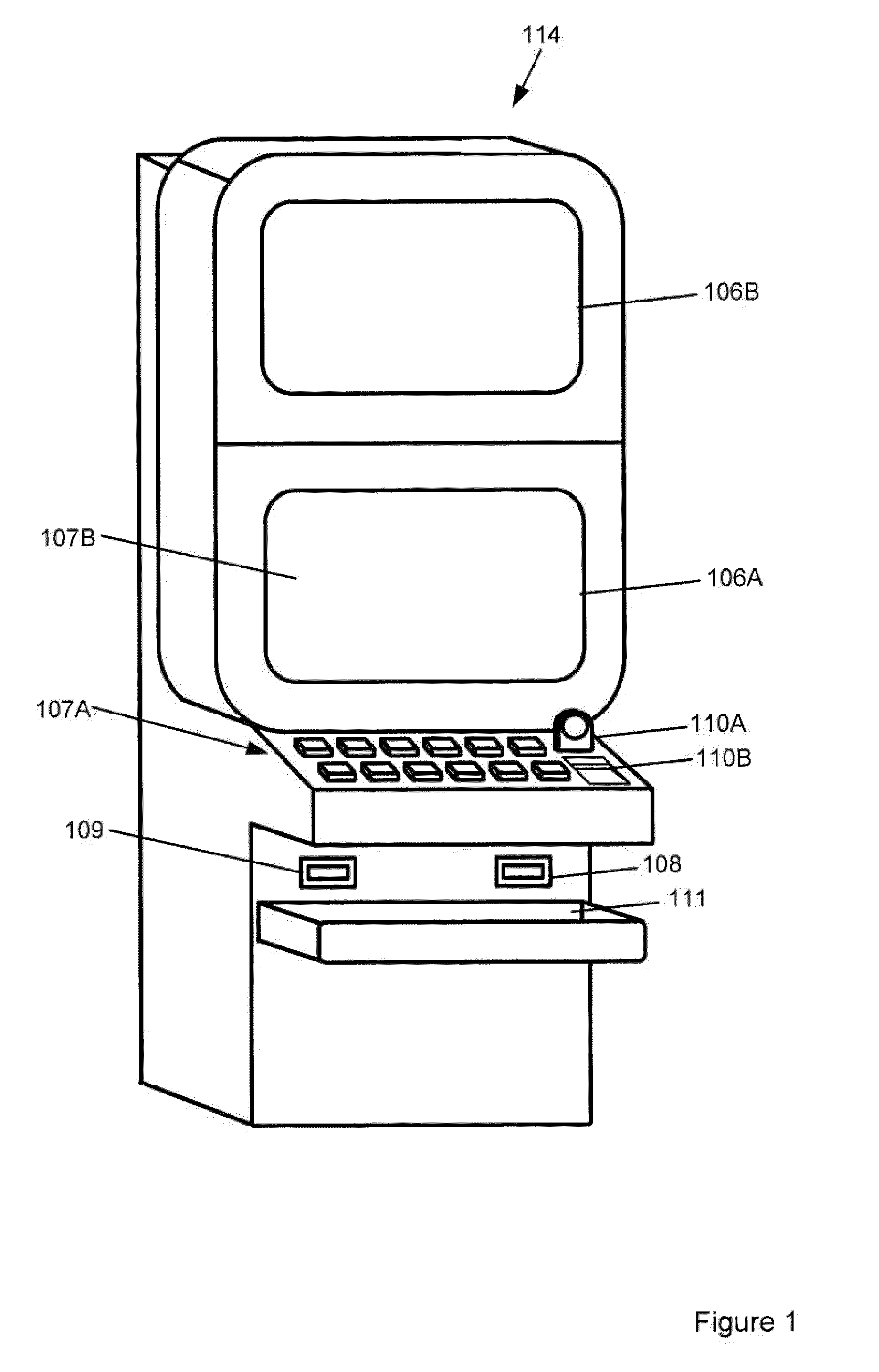Win distribution for a gaming machine and method of gaming
a gaming machine and win distribution technology, applied in the field of gaming machines and methods of gaming, can solve the problems of reducing the entertainment value of game play, affecting the quality of game play, so as to achieve the effect of reducing the cost of game play
- Summary
- Abstract
- Description
- Claims
- Application Information
AI Technical Summary
Benefits of technology
Problems solved by technology
Method used
Image
Examples
example 1
A Dice Game
[0060]An example embodiment is in the form of a dice game where each side of the die occurs with equal probability. A range of wager options is provided from −5 through 0 to +5 and a listing of the prizes payable on each outcome of the dice game is provided in Table 1. Each wager option may represent a distinct game where only that wager option is available. Alternatively, the wager options may all be available in a single game, with the awards varying depending on what wager option is selected. The information in Table 1 forms part of the pay table 7 and is stored in the memory 103.
[0061]If the player wagers 1 credit upon the roll of a dice, then the prize listing specifies an award of 0 credits for dice results 1, 2, 3, 4, 5. This results in a loss of 1 credit to the player. An award of 5 credits is made for a dice result of 6. The return, which is calculated as sum of the awards that can be won divided by the number of possible game outcomes, is ⅚. The return to player...
example 2
[0068]A traditional game may involve a skewed distribution of results where the peak is below the mean. In other words, the average return is greater than what is most often achieved. In many games the average return is rarely exceeded. From the point of view of the player this result may be disappointing. An example win distribution of this type is shown in FIG. 5. A peak in the distribution occurs at an award of zero, which is well below the expected return of 9 credits.
[0069]If the pay table is modified so that a win of 18 credits is awarded instead of the award of zero credits and new negative wins are introduced, then the same return to player can be achieved. An example is shown in FIG. 6, which has the same win distribution as in FIG. 5, but with different awards. Over 100 games, the player can expect on average that:[0070]60 games (a 0.60 probability) will result in an outcome that awards 18 credits;[0071]32 games (a 0.32 probability) will result in an outcome that awards 0 ...
example 3
[0078]Table 2 shows an example of a win distribution of a traditional style game with high awards of low probability and no award and small awards of high probability, together with another embodiment of a game including negative wins and having a win distribution to as to provide an above average win most of the time.
TABLE 2win distribution of a traditional and negative win gameTraditional gameNegative win gameprobabilityawardreturnawardreturn0.1505.0−26−2.60.2204.040.80.3103.0144.20.400.0249.61.012.012.0
[0079]The pay and return in the columns headed ‘Traditional game’ show a situation with large positive wins occurring with small probability and smaller wins and 0 results occurring with larger probabilities. This structure is common in traditional gaming machines. The return is 12 credits but a lesser result (either 10 credits or 0 credits) is achieved with high probability 0.7. The wager required to play each game may be set at 13 credits to maintain a negative return to player.
[...
PUM
 Login to View More
Login to View More Abstract
Description
Claims
Application Information
 Login to View More
Login to View More - R&D
- Intellectual Property
- Life Sciences
- Materials
- Tech Scout
- Unparalleled Data Quality
- Higher Quality Content
- 60% Fewer Hallucinations
Browse by: Latest US Patents, China's latest patents, Technical Efficacy Thesaurus, Application Domain, Technology Topic, Popular Technical Reports.
© 2025 PatSnap. All rights reserved.Legal|Privacy policy|Modern Slavery Act Transparency Statement|Sitemap|About US| Contact US: help@patsnap.com



